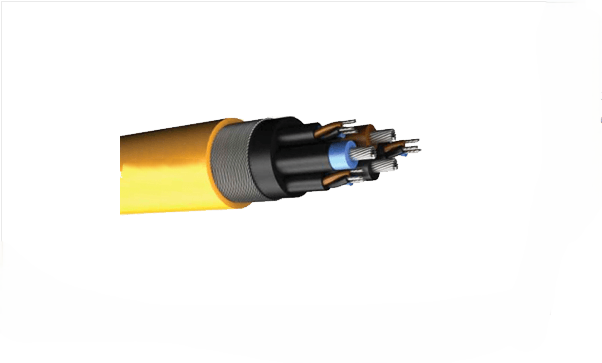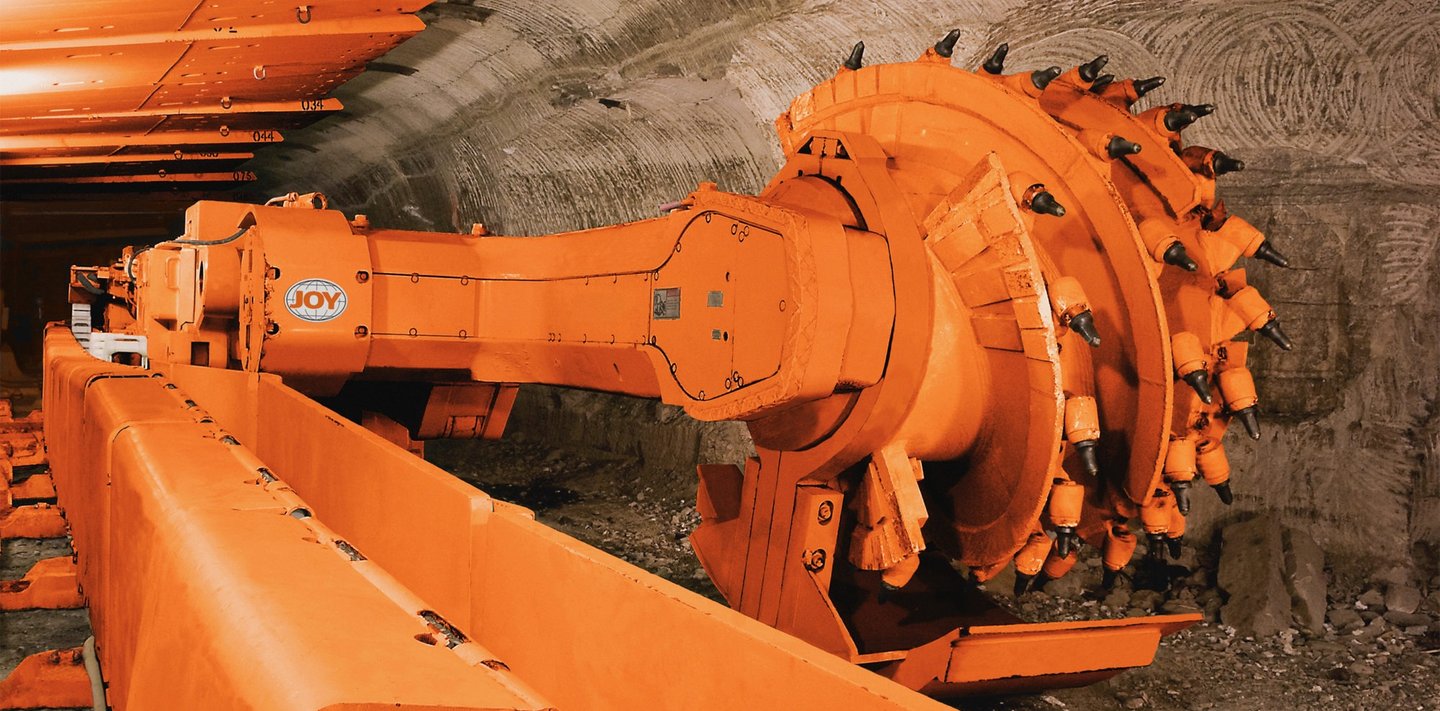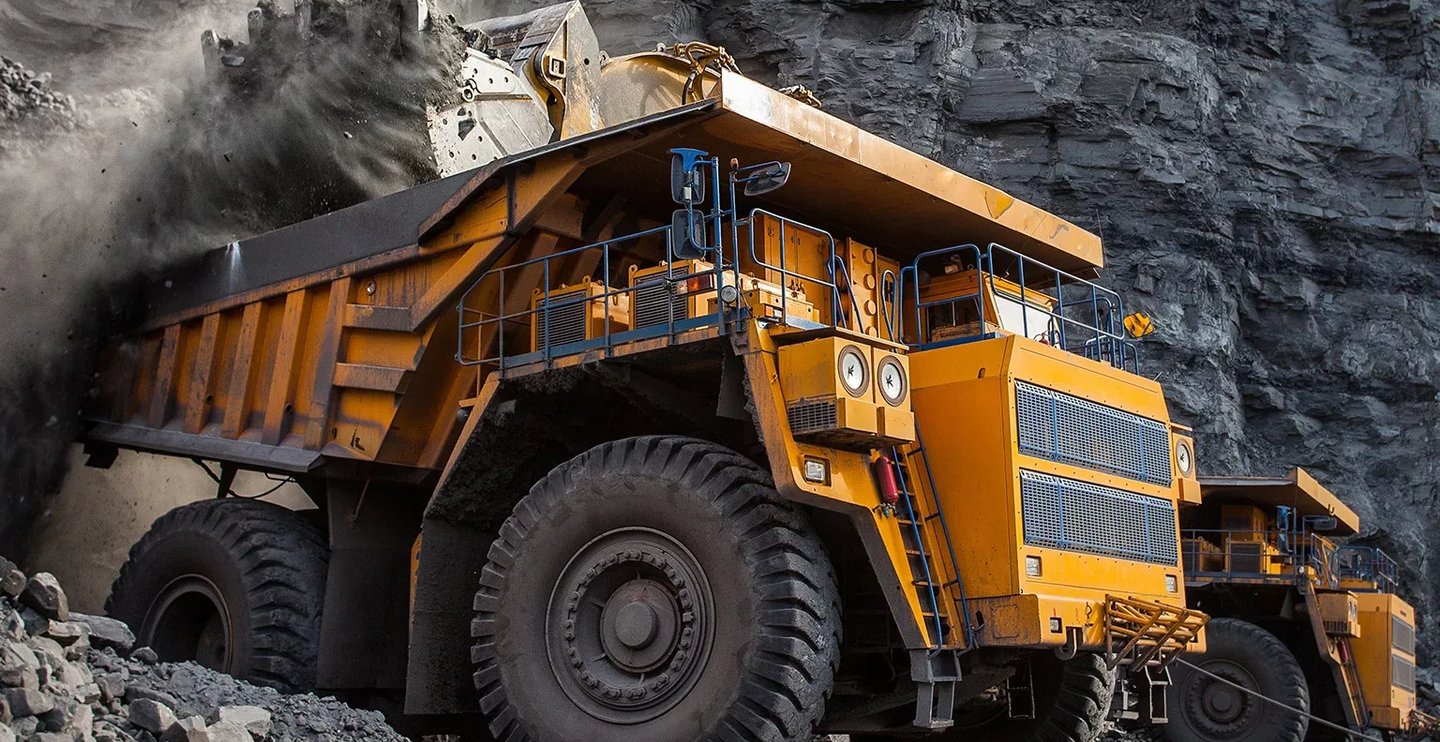Understanding the (N)SSHCGEWÖU-V Mining Cable
In the demanding world of underground mining operations, where harsh conditions and extreme environments are the norm, selecting the right electrical equipment can mean the difference between operational success and costly downtime. Among the most critical components in this industrial ecosystem is the humble yet sophisticated mining cable, specifically designed to withstand the punishing conditions found deep beneath the earth's surface. Today, we'll explore one of the most robust and reliable solutions available: the (N)SSHCGEWÖU-V mining cable. This specialised heavy-duty cable represents decades of engineering innovation, combining advanced materials science with practical mining experience to create a power transmission solution that can reliably operate in some of the world's most challenging industrial environments. Understanding its capabilities, construction, and proper application is essential for mining engineers, electrical contractors, and safety professionals working in the extractive industries.
5/26/202511 min read
Understanding the (N)SSHCGEWÖU-V Mining Cable


In the demanding world of underground mining operations, where harsh conditions and extreme environments are the norm, selecting the right electrical equipment can mean the difference between operational success and costly downtime. Among the most critical components in this industrial ecosystem is the humble yet sophisticated mining cable, specifically designed to withstand the punishing conditions found deep beneath the earth's surface. Today, we'll explore one of the most robust and reliable solutions available: the (N)SSHCGEWÖU-V mining cable.
This specialised heavy-duty cable represents decades of engineering innovation, combining advanced materials science with practical mining experience to create a power transmission solution that can reliably operate in some of the world's most challenging industrial environments. Understanding its capabilities, construction, and proper application is essential for mining engineers, electrical contractors, and safety professionals working in the extractive industries.
The Foundation of Underground Power Distribution
The (N)SSHCGEWÖU-V cable serves as the electrical lifeline for coal-cutting machines and similar heavy equipment operating in underground mining environments. Think of it as the nervous system of a mining operation, carrying both the power needed to operate massive cutting machinery and the control signals that ensure these machines operate safely and efficiently.
Unlike standard industrial cables that might function adequately in controlled factory environments, mining cables must contend with a unique combination of stresses that would quickly destroy conventional electrical conductors. These include constant mechanical flexing as equipment moves through confined spaces, exposure to corrosive chemicals and moisture, extreme temperature variations, and the ever-present risk of mechanical damage from falling rocks or equipment impacts.
The designation "(N)SSHCGEWÖU-V" might appear to be a random collection of letters, but each character actually tells us something important about the cable's construction and capabilities. This naming convention, following German VDE standards, provides a shorthand description of the cable's key characteristics. The "(N)" indicates standardisation according to VDE specifications, while "SS" refers to the very finely stranded conductors that provide exceptional flexibility. The "H" denotes halogen-free materials, crucial for maintaining air quality in enclosed mining environments, whilst "C" indicates a concentric conductor arrangement that optimises electrical performance.


Primary Application Scenarios in Mining Operations
The coal mining industry presents some of the most demanding operating conditions for electrical equipment anywhere in the world. Coal-cutting machines, also known as continuous miners or longwall shearers, represent the cutting edge of mining technology, capable of extracting tonnes of coal per minute whilst simultaneously advancing through coal seams. These machines require substantial electrical power, often operating at voltages of 0.6 to 1 kilovolt, whilst also needing sophisticated control systems that can respond instantly to changing geological conditions.
The (N)SSHCGEWÖU-V cable excels in these applications because it can simultaneously handle high-power transmission and sensitive control signals. The cable's construction includes dedicated power cores for the main electrical supply alongside separate control and monitoring cores that carry sensor data and control commands. This integrated approach eliminates the need for multiple separate cables, reducing installation complexity and potential failure points.
Beyond coal-cutting applications, these cables find extensive use in tunnel construction projects, where drilling and excavation equipment must operate in similarly challenging conditions. The construction industry increasingly relies on mechanised tunnel boring machines for projects such as underground railways, water supply tunnels, and highway infrastructure. These applications share many characteristics with mining operations, including confined spaces, high mechanical stresses, and exposure to moisture and debris.
The cable's versatility extends to quarrying operations, where open-pit mining equipment requires reliable power distribution across large distances and varying terrain. Surface mining operations present their own unique challenges, including exposure to weather extremes, UV radiation, and the constant movement of heavy machinery across rough ground. The (N)SSHCGEWÖU-V cable's robust outer sheath and reinforced construction make it equally suitable for these demanding surface applications.
Environmental Resilience and Mechanical Performance
Understanding the environmental challenges that mining cables must overcome helps appreciate the sophisticated engineering that goes into their construction. Underground mining environments typically experience temperature fluctuations that would challenge many industrial materials. Whilst surface temperatures might be moderate, the combination of equipment heat generation, geothermal effects, and ventilation systems can create localised temperature extremes.
The (N)SSHCGEWÖU-V cable operates reliably across a temperature range from -40°C to +80°C for fixed installations, with slightly reduced flexibility limits for mobile applications. During normal operation, the conductor temperature can reach +90°C without compromising performance, whilst short-circuit conditions are safely managed with conductor temperatures up to +200°C. This thermal resilience ensures consistent performance whether the cable is installed in the frigid conditions of Arctic mining operations or the elevated temperatures common in deep underground workings.
Moisture management represents another critical design consideration. Underground mining operations frequently encounter groundwater seepage, flooding risks, and high humidity conditions. The cable's multi-layer sheath system provides comprehensive moisture protection, with the inner EPR compound sheath offering chemical resistance whilst the outer elastomer sheath provides mechanical protection and additional moisture barriers.
Chemical resistance becomes particularly important when cables are exposed to the various lubricants, hydraulic fluids, and cleaning agents commonly used in mining operations. The cable's specialised compound formulations resist degradation from oils, fuels, and industrial solvents, maintaining their protective properties throughout the cable's operational life.


Detailed Electrical and Mechanical Specifications
The electrical characteristics of the (N)SSHCGEWÖU-V cable reflect the demanding requirements of modern mining equipment. With a nominal voltage rating of 0.6/1 kV and a test voltage of 3 kV, the cable provides a substantial safety margin above its operating voltage. This conservative rating approach ensures reliable operation even when electrical systems experience transient voltage spikes or other electrical disturbances common in industrial environments.
The mechanical specifications reveal the cable's exceptional durability. With a tensile strength of 15 N/mm², the cable can withstand significant pulling forces during installation and operation. This mechanical strength becomes crucial when cables must be routed through irregular mine shafts, around obstacles, or when equipment movement creates dynamic loading conditions.
The cable's construction allows it to handle not just static loads but also the dynamic stresses associated with moving machinery. Coal-cutting equipment frequently operates on mobile chassis that traverse uneven mine floors, creating constant flexing and bending stresses on attached cables. The fine-strand conductor construction and flexible insulation materials ensure that these dynamic loads don't lead to conductor fatigue or insulation failure.
Bending radius specifications are particularly important for mining applications, where cables must often navigate tight corners and confined spaces. The (N)SSHCGEWÖU-V cable maintains its electrical and mechanical properties even when installed with relatively tight bend radii, providing installation flexibility that simplifies routing in complex mine layouts.
Advanced Construction and Materials Technology
The sophisticated construction of the (N)SSHCGEWÖU-V cable represents a masterclass in materials engineering, with each component carefully selected and designed to contribute to the overall performance and reliability of the finished product. Understanding this construction helps appreciate why these cables can perform reliably in conditions that would quickly destroy conventional electrical cables.
At the heart of the cable lies the conductor system, utilising electrolytic copper wire that has been tinned to prevent corrosion and improve solderability. The copper stranding follows Class 5 specifications according to IEC 60228 and DIN VDE 0295 standards, indicating very fine stranding that maximises flexibility whilst maintaining excellent electrical conductivity. This fine stranding is crucial for mining applications, where cables must flex repeatedly without conductor failure.
The insulation system employs EPR (Ethylene Propylene Rubber) type 3G13 compound, specifically formulated to provide excellent electrical properties whilst maintaining flexibility across the cable's operating temperature range. EPR insulation offers superior performance compared to traditional rubber or PVC insulations, particularly in terms of thermal stability and resistance to electrical stress. The 3G13 designation indicates a specific compound formulation optimised for mining applications, providing enhanced resistance to oils, chemicals, and mechanical stress.
Between the conductor insulation and the cable's protective sheaths lies a sophisticated screening system that manages electrical fields and provides additional mechanical protection. Semiconducting layers over individual conductors help maintain uniform electrical stress distribution, preventing localised electrical concentrations that could lead to insulation breakdown. These layers also facilitate easy cable termination by providing defined stripping points for installation technicians.
The cable's armour system represents one of its most innovative features, combining galvanised steel and tinned copper in a pliable construction that provides exceptional mechanical protection whilst maintaining flexibility. This hybrid armour approach offers the corrosion resistance of tinned copper combined with the mechanical strength of galvanised steel. The pliable construction ensures that the armour can flex with the cable during operation without cracking or separating.
Understanding the Monitoring and Control Systems
Modern mining operations increasingly rely on sophisticated monitoring systems to ensure safe and efficient operation, and the (N)SSHCGEWÖU-V cable incorporates dedicated monitoring capabilities that represent a significant advance over traditional power cables. These monitoring features transform the cable from a simple power transmission medium into an intelligent component of the mining operation's safety and maintenance systems.
The cable includes dedicated monitoring cores alongside its power and control conductors. These monitoring cores, when connected to appropriate detection equipment, can identify insulation degradation, moisture ingress, and mechanical damage before these conditions lead to cable failure. This predictive maintenance capability allows mining operations to schedule repairs during planned downtime rather than responding to emergency failures that could halt production.
The monitoring system works by detecting changes in electrical characteristics that indicate developing problems. For example, moisture ingress into the cable structure changes the insulation resistance between conductors and the cable's screening system. By continuously monitoring these parameters, maintenance teams can identify cables that require attention well before actual failure occurs.
Control cores within the cable carry the signals that manage modern mining equipment's sophisticated automation systems. These signals might include position feedback from cutting head sensors, hydraulic pressure monitoring, environmental sensors, and emergency stop systems. The separation of these control signals from the main power conductors prevents electrical interference whilst ensuring that critical safety systems remain operational even if power system faults occur.



Comprehensive FAQ: Addressing Common Mining Cable Questions
What does the complex designation (N)SSHCGEWÖU-V actually mean, and why is it important?
The designation follows German VDE standards and provides a comprehensive description of the cable's key characteristics. The "(N)" indicates standardisation according to VDE specifications, ensuring consistent quality and performance. "SS" refers to very finely stranded conductors that provide exceptional flexibility crucial for mining applications where cables must flex constantly. "H" denotes halogen-free materials, important for maintaining air quality in confined mining spaces where toxic gas generation could endanger workers.
"C" indicates concentric conductor arrangement, which optimises electrical performance and reduces electromagnetic interference. "G" shows rubber insulation, specifically chosen for its durability and flexibility in harsh environments. "E" specifies EPR (Ethylene Propylene Rubber) insulation, providing superior thermal and chemical resistance compared to conventional rubber compounds. "W" indicates weather resistance for applications involving exposure to environmental conditions, whilst "Ö" denotes oil resistance, crucial given the prevalence of hydraulic fluids and lubricants in mining operations. "U" signifies universal application capabilities, and "V" indicates the voltage rating of 0.6/1 kV.
Why is this specific cable construction particularly suitable for mining applications compared to standard industrial cables?
Mining environments present a unique combination of stresses that would quickly destroy conventional cables. The (N)SSHCGEWÖU-V cable addresses each of these challenges through specific design features. The fine-strand conductor construction provides flexibility needed for equipment that constantly moves and flexes. The EPR insulation system offers superior resistance to the oils, chemicals, and temperature extremes common in mining operations.
The dual-sheath construction with reinforced armour provides exceptional mechanical protection against impact, crushing, and abrasion from rocks and equipment. The integrated monitoring capabilities allow predictive maintenance, reducing unexpected failures that could halt mining operations. The halogen-free construction ensures that if a fire does occur, toxic gas generation is minimised, protecting worker safety in confined underground spaces.
Can this mining cable be used in other industrial applications outside of coal mining?
Absolutely. Whilst specifically designed for coal mining applications, the cable's robust construction and comprehensive protection systems make it suitable for various demanding industrial environments. Tunnel construction projects benefit from the cable's ability to withstand mechanical stress and moisture exposure. Quarrying operations can utilise the cable's weather resistance and mechanical durability for surface mining equipment.
The cable also finds applications in heavy industry where equipment operates in harsh conditions, such as steel mills, cement plants, and chemical processing facilities. Marine and offshore applications can benefit from the cable's moisture resistance and corrosion protection. Construction sites with heavy machinery and temporary power distribution systems often specify these cables for their reliability and safety features.
How does the monitoring system work, and what specific problems can it detect?
The monitoring system utilises dedicated cores within the cable that carry low-level signals to detection equipment. These cores can identify several types of developing problems before they cause cable failure. Insulation degradation appears as changes in resistance between conductors and screening systems. Moisture ingress creates characteristic changes in insulation properties that the monitoring system can detect.
Mechanical damage, such as that caused by rock falls or equipment impacts, creates localised changes in cable geometry that affect electrical characteristics. The monitoring system can often pinpoint the location of damage, allowing maintenance teams to focus repair efforts efficiently. Temperature monitoring through resistance changes in conductors can identify overloading conditions or cooling system failures before they cause insulation damage.
What are the key installation considerations for this type of cable in mining environments?
Proper installation is crucial for achieving the cable's full performance potential. Bend radius requirements must be carefully observed, particularly during installation through irregular mine shafts or around obstacles. The cable's weight requires appropriate support systems to prevent mechanical stress on connections and terminations.
Environmental sealing at cable entry points becomes critical in moisture-prone areas. Proper earthing and screening connections ensure that the monitoring systems function correctly and that electromagnetic interference is minimised. Installation teams should be trained in handling the cable's armour system to avoid damage during termination procedures.
How does the cable's performance change with temperature, and what are the practical implications?
The cable's electrical and mechanical properties change predictably with temperature. At low temperatures, the cable becomes less flexible, requiring careful handling during installation and maintenance. The insulation properties actually improve at lower temperatures, providing higher breakdown strength.
At elevated temperatures, the cable maintains its electrical properties up to the rated conductor temperature of +90°C. Beyond this point, insulation aging accelerates, potentially shortening cable life. The short-circuit rating of +200°C provides substantial safety margin for fault conditions. Practical implications include the need for temperature monitoring in high-heat applications and consideration of thermal expansion and contraction in cable routing.
What maintenance practices optimise the performance and lifespan of mining cables?
Regular visual inspection forms the foundation of effective cable maintenance, looking for signs of mechanical damage, excessive wear, or environmental degradation. The integrated monitoring system should be regularly tested to ensure proper function and to establish baseline readings for comparison.
Thermal imaging can identify hot spots that indicate developing electrical problems or inadequate connections. Insulation resistance testing at scheduled intervals can detect moisture ingress or insulation degradation before failure occurs. Mechanical inspection of cable supports and routing systems prevents excessive stress that could lead to premature failure.
Documentation of maintenance activities, including monitoring system readings and inspection results, helps identify trends that might indicate developing problems. Preventive replacement based on monitoring data and visual inspection results proves more cost-effective than reactive replacement after failure.
Conclusion: Engineering Excellence for Extreme Environments
The (N)SSHCGEWÖU-V mining cable represents the culmination of decades of engineering experience and materials science advancement, specifically designed to meet the unique challenges of underground mining operations. Its sophisticated construction, combining advanced materials with intelligent monitoring capabilities, provides mining operations with a reliable foundation for their electrical power distribution systems.
Understanding the cable's capabilities, proper applications, and maintenance requirements enables mining professionals to make informed decisions about their electrical infrastructure investments. As mining operations continue to evolve toward greater automation and efficiency, the role of reliable electrical systems becomes increasingly critical to operational success and worker safety.
The investment in high-quality mining cables like the (N)SSHCGEWÖU-V pays dividends through reduced downtime, improved safety, and lower total cost of ownership compared to conventional cable solutions. For mining operations serious about reliability and safety, these specialised cables represent not just a technical specification, but a commitment to operational excellence in one of the world's most demanding industrial environments.




